SOLID is an acronym of the following five basic principles of Object Oriented Programming and design.
- Single Responsibility Principle
- Open Closed Principle
- Liskov Substitution Principle
- Interface Segregation Principle
- Denedency Inversion Principle
1. Single Responsibility Principle
There should never be more than one reason for a class to change
What:
- 2 reasons to change means 2 responsibilities.
Why:
- A class with multiple responsibilities is likely unrobust.
Example:
- Modem class
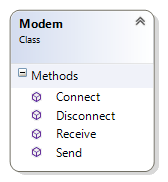
Responsibilities of Modem class can be separated into Managing connection(Connect/Disconnect) and Data communication(Send/Receive). If these responsibilities are modified separately, this class violates the SRP.
How:
- Design abiding by GRASP
- Work with design patterns: Proxy, Facade or Iterator
- TDD
2. Open-Closed Principle
Classes should be open for extension but closed for modification.
What:
- “Open”
- Extensible for behaviors
- “Closed”
- Changes to behaviors DO NOT affect to the source code or assemblies
Why:
- For benefits of OOP: Flexibility, Reusability and Maintenancibility
Example:
- Violated case

Client is using Server class. The Client class has to be changed to connect to another Server.
- Open-Closed case:
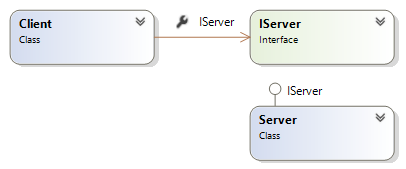
No changes have to be made when the Server is modified.
How:
- Work with design patterns: Strategy or Template Method
- TDD
3. Liskov Substitution Principle
Subtypes must be substitutable for their base types.
What:
- A method uses the base class can use any sub classes.
- Designer/Programmer has to guarantee the behavior of sub class as same as the base class.
Why:
- Violoation of LSP means violoation of OCP
Example:
- Violated case
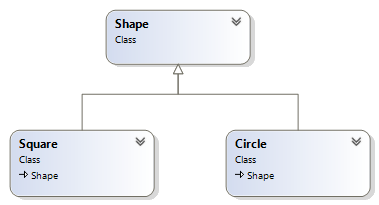
public void DrawShape(Shape shape)
{
if (shape is Square)
{
Square sq = (Square)shape;
sq.Draw();
}
else if (shape is Circle)
{
Circle c = (Circle)shape;
c.Draw();
}
}
Square and Circle classes cannot substitute Shape the base class.
How:
- Design by Contract
4. Interface Segregation Principle
Clients should not be forced to depend upon interfaces that they do not use.
What:
- An interface should not have too many features. (That is called ‘fat’ interface.)
Why:
- A client class has to implements all the ‘fat’ interface’s methods even if the class doesn’t need all of them. This could cause unnessesary modifications.
Example:
- Violated case
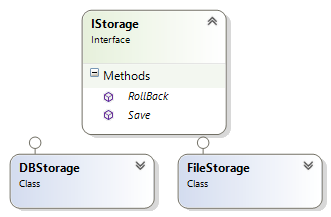
IStorage interface has RollBack and Save methods. However, RollBack method is used only by DBStorage class.
How:
Split interfaces according to its feature.
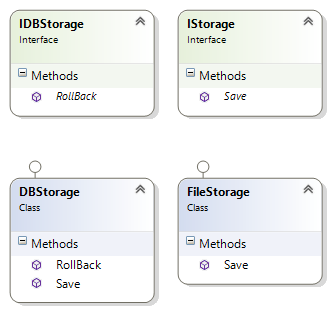
5. Dependency Inversion Principle
High level modules should not depend upon low level modules. Both should depend upon abstractions. Secondly, abstractions should not depend upon details. Details should depend upon abstractions.
What:
- A module should receive low level modules upon using them without having strong dependency.
Why:
- A high level module depending on low level ones is affected by the low level modifications.
- This should be inverted because high level should be superior.
Example:
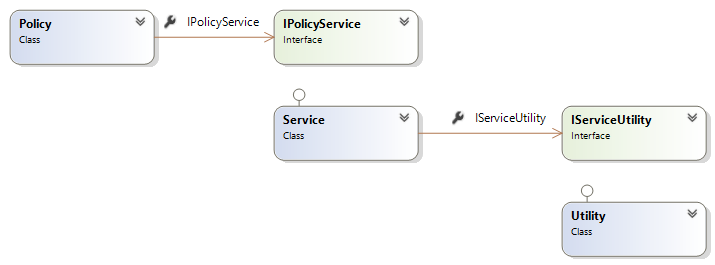
High level modules don’t depend on low level modules.
How:
Design with DI(IoC) container.